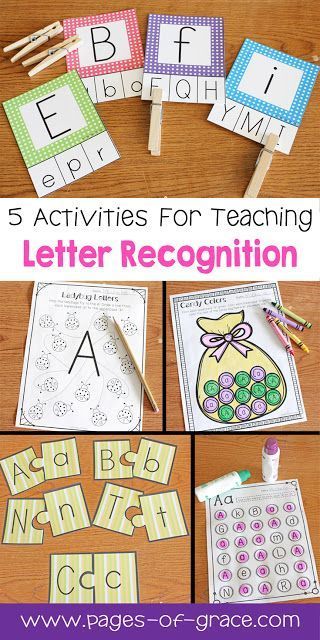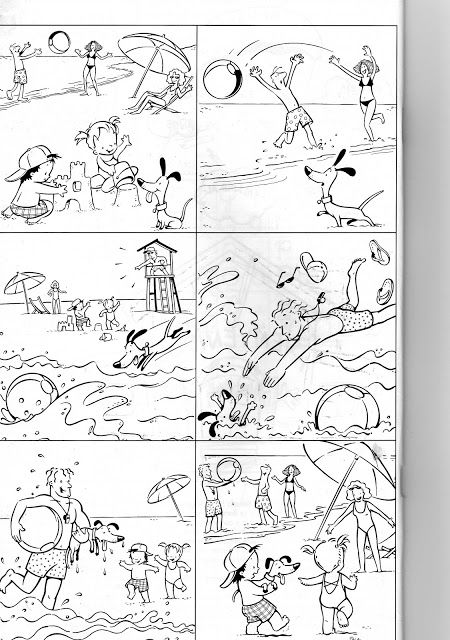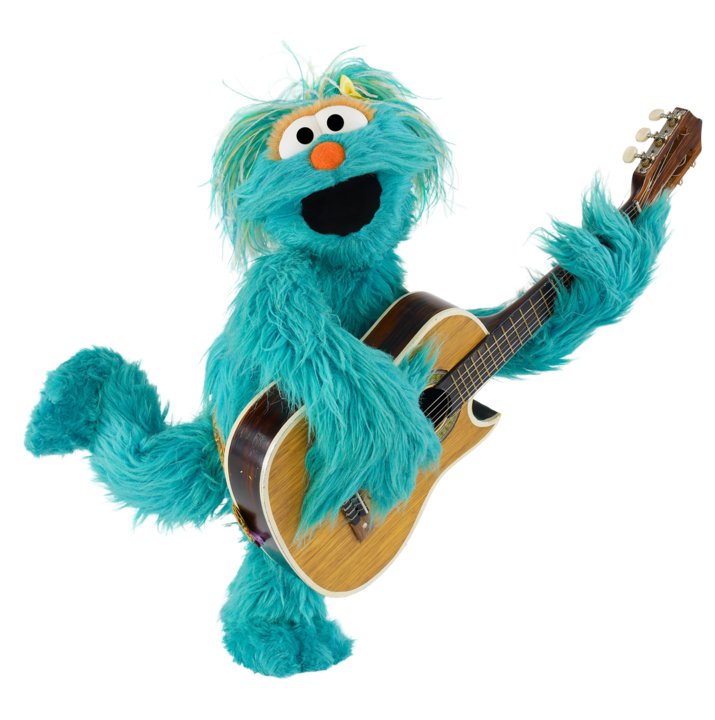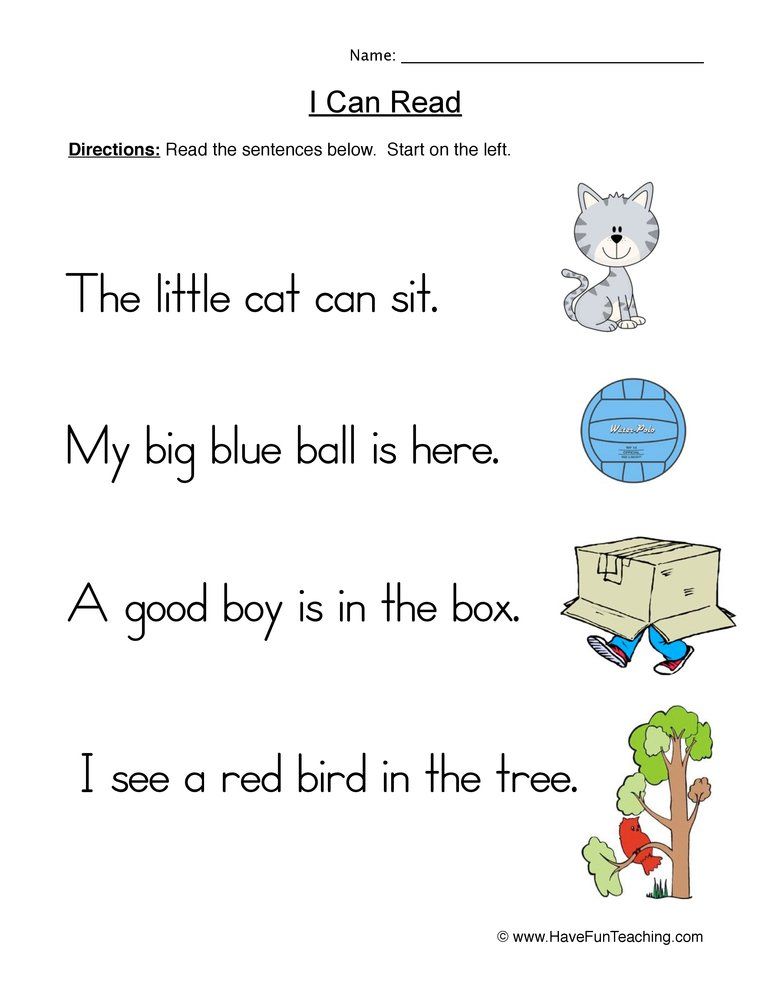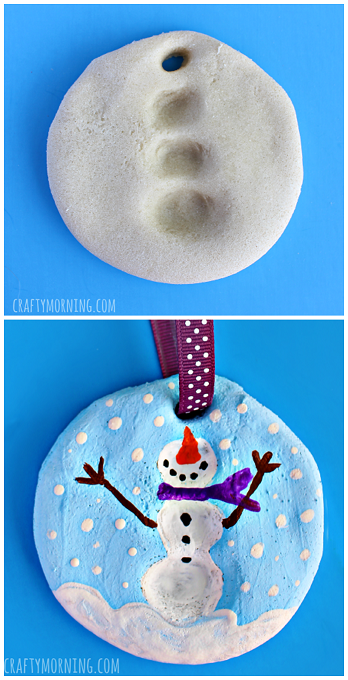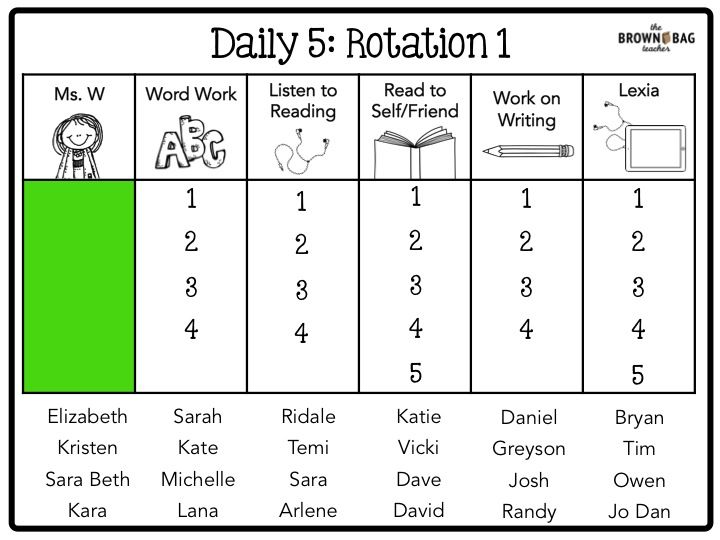How to teach letter recognition
How to Teach Your Preschooler Letter Recognition Through Play
- Share
Helping your preschooler to gain letter recognition skills does not need to feel like “work!”
Learning through play in a fun, stress-free, and positive manner is always the best way.
What Letter Recognition Means
Learning letter recognition skills involves several different hands-on components.
Children need to distinguish the shapes of letters from each other (visually recognize them) and be able to point to and state the letter names, as well as the sounds made by each letter.
In addition, they must learn to form letters and write them .
These skills do not all need to be accomplished during the preschool years and in fact, preschoolers are not yet developmentally ready to learn to read and write.
By simply exposing your child in a fun way, you will begin the process of laying down foundational pre-reading and writing skills.
When Should a Child Recognize Letters of the Alphabet?
Although you can read about average ages when kids gain alphabet skills, those often vary widely.
Just as children learn to walk and talk at different ages, the same is true for recognizing letters of the alphabet.
They each learn at their own pace, depending on many factors.
How to Build Skills to Prepare Your Child for Letter Recognition
Through fun play activities, parents can help their children gain various developmental skills that prepare preschoolers for letter recognition.
Those types of skills include visual perception, memory, and auditory perception.
What this means is that learning the letters does not in fact start with exposure to the actual letters, but rather to play activities that develop these skills.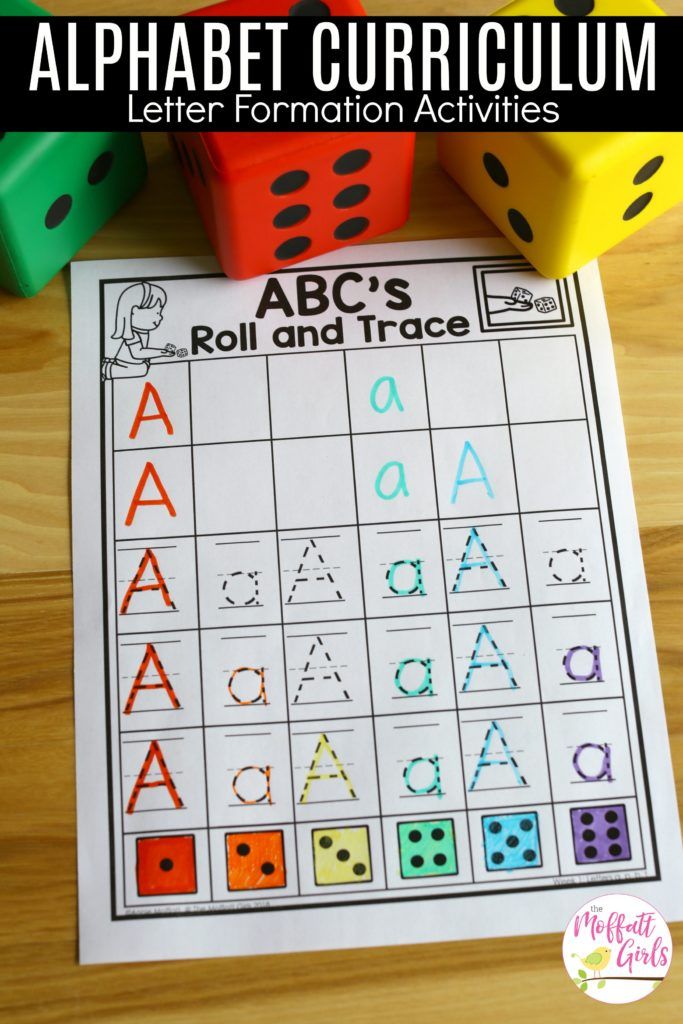
Visual Perception
Visual perception refers to your child’s brain making sense of what their eyes are seeing, such as details and shapes (shape recognition).
These skills also include visual-motor and eye-hand coordination.
Helpful kinds of activities include:
- those that exercise the large muscles (such as throwing/catching)
- small motor activities (like lacing)
- visual perception (such as building puzzles)
- and limiting screen time, which has limitations related to visual perception skills.
Memory
Memory development relates to storing and using information in the brain.
Stress-free activities to enhance these skills include:
- simple card games
- Memory card games (get your own by downloading the FREE set of printables at the end of the post)
- talking about fun memories
- story visualization
- reading and talking about books
- Visual memory games, like picture bingo
- Auditory memory games
Auditory Perception
Auditory perception includes the brain’s ability to distinguish sounds and words, which is important for learning the sounds of letters.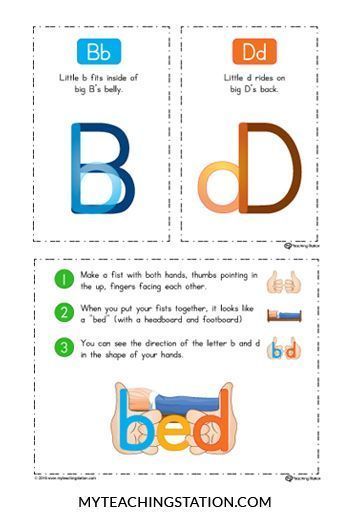
These are the kind of activities that can support this skill:
- listening to music
- distinguishing animal sounds
- clapping out copied rhythm patterns
[source]
How do I Teach My Child Letter Recognition?
Even before your child shows an interest in print,
- reading to them
- sharing poems and nursery rhymes
- talking to them
- telling stories
- and singing songs to or with them
are all meaningful and fun activities that set the stage for letter recognition.
Keep it fresh, keep it new, and be willing to return to their favourite activities when asked.
As your child shows a growing interest in print, make it available to them whenever possible.
Instead of keeping that book to yourself as you read to them, show children the words, running your fingers over them as you read. Let kids turn the pages of books.
Have books available in the home to which kids have constant access.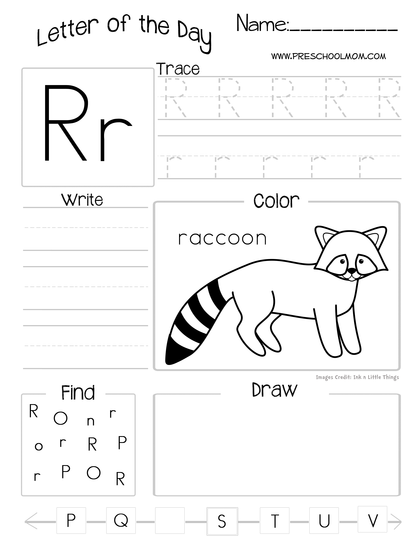
So many things around the house contain words, like packages, lists, letters, emails, screens, magazines, and greeting cards.
Point and touch as you read, showing children that you are using words daily, expressing how much can be learned through their use.
Write in front of your kids for all different purposes, at least sometimes spelling aloud.
Make drawing and writing tools and surfaces available to your child at all times, indoors and out.
Don’t just offer the traditional papers and crayons – include:
- Drawing with sticks in the sand
- Writing on clay or playdough
- Drawing on shower and bath walls with soap
Should I Teach the Letters in a Specific Order?
Instead of teaching letters in any special, prescribed order, focus on those that are used most often and in order of importance for your child.
They typically want to know about the letters:
- in their names
- in “MOM” and “DAD”
- in a pet’s name
- environmental print (like on STOP or WALK signs)
- and even outstanding words from a favourite storybook
Think about and pay attention to those letters and words that appear to be interesting to your kids, using them as the foundation to build upon.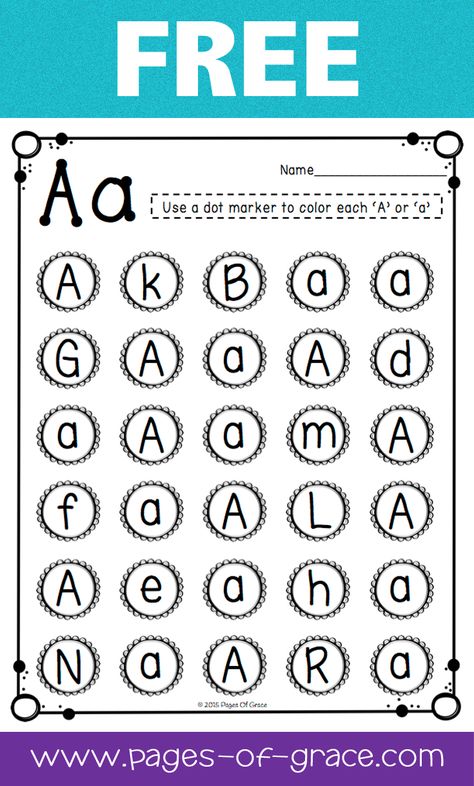
[source]
Is it Better to Teach Upper or Lowercase Letters First?
For preschoolers, the field of occupational therapy makes a good case for beginning with capitals in handwriting letter formation.
They are formed from larger lines and curves that avoid retracing and changing directions, while still teaching top to bottom strokes.
If children try to form letters for which their visual-motor skills are not prepared, they sometimes build poor habits that can be difficult to break later on.
Of course, your child may be familiar with lowercase letters, seeing them in many print formats, and gradually learning to identify them.
When their motor skills are ready, they typically make an easy switch to including them along with uppercase when they write.
[source]
Letter Recognition Activities and Games for Preschoolers
Here are some fun ways to teach your preschooler recognition through play.
1. Point Out Environmental Print
Print is all around us.
Point out, talk about and stress the sounds of words on signs (such as favourite restaurants and traffic/street signs), cereal or other product boxes/labels, and familiar logos.
2. Share Rhyming Books
Read favourite rhyming books to your child, accentuating the rhyme and rhythm.
Afterwards, play an oral game of stating some rhyming words from the story and adding a new rhyming word of your own.
Challenge your child to come up with more words that rhyme. Either real or pretend “words” are okay, as it is the rhyming factor that counts.
3. Letter Hunt
Point out and talk about the letters in your child’s name, making them clearly visible in print.
Show them how you find one of those same letters in a magazine or newspaper and cut out as a rather square piece (not necessarily trying to cut out close to the letter’s edges).
Challenge them to find other letters from their name in print and cut those out, as well.
After all the letters have been found, they can arrange them in the correct order for their name.
These may be kept in a small bag for future use or glued onto a coloured sheet of paper to post on the fridge or in your child’s room.
Instead of cutting, another option is to use different colours of highlighters to mark various letters found in print.
4. Play with Plastic/Wooden Letters
Letters may be sorted and put into piles in different ways:
- those with curves
- letters with straight lines
- those from your child’s name or other important words
- letters they can name
- and those for which they can say the sounds
Letters with magnets may be used on the fridge or on a magnet board for sorting purposes.
5. Bake Letters
Use bread or pretzel dough to form letters with your child, then bake them to be eaten later.
While you work, talk about the letter names, sounds, and easy words (like their names) that may be formed.
Special baking tins and cookie cutters may be purchased to bake letters.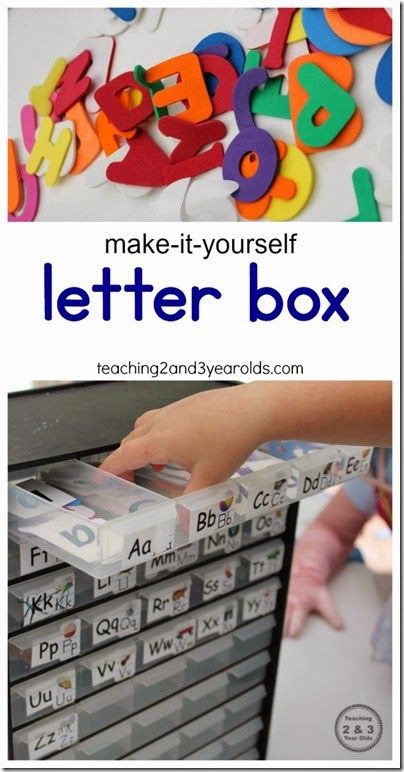 You can also bake oblong cakes and cut into large letter shapes, as well.
You can also bake oblong cakes and cut into large letter shapes, as well.
6. Form Letters with Familiar Materials
Offer kids various types and colours of pasta to form letters on flat backgrounds, either to glue into place or to leave loose and rearrange into different letters.
Other materials to explore might include:
- dry breakfast cereals
- buttons or pennies
- cotton balls
- dried beans
- mini-marshmallows
- toothpicks
- rice
- Yarn
7. Form Letters with Unusual Materials
Using a tabletop or oblong baking pan with low sides, spread shaving cream or pudding for your child to trace letters into with their fingers.
The same may be done with sand (or moved outside), to trace in with fingers or safe “sticks,” like pencils, dowels, or rulers.
8. Go on a Scavenger Hunt
Have children choose a letter card or cutout. Talk about how the letter looks and sounds.
Depending on your child’s level of development, challenge them to find things around the house that have that letter printed on them OR objects that begin with that letter’s sound.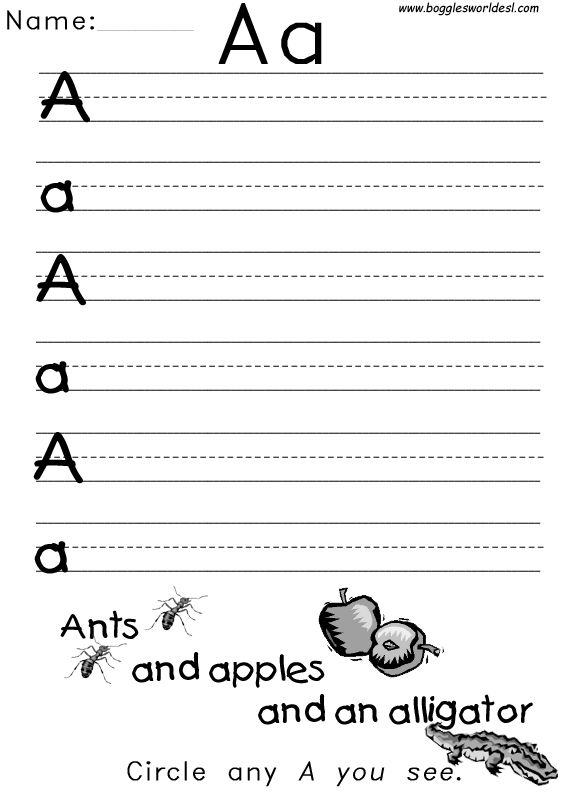
9. Fish for Letters
Magnetic letter fishing games may be purchased or made with paper, magnets, paperclips, dowels, and string.
Name or pick a letter, focusing on how it looks and/or sounds. Kids then “fish” for the matching letters from the “pond.”
They can also just fish for a random letter and then name it once it is “caught.”
You can also use a version of this game later on, when children are learning to match upper and lowercase letters.
10. Play Musical Chairs with Letters
Add paper plates with letters or letters cut from cardboard right onto the chairs or onto the floor beneath.
Children walk around the circle and find a place to sit when the music stops. They each then name the letter on their chair or floor directly beneath.
11. Find Letters on a Keyboard
Make use of an old computer keyboard or typewriter. Your child names the letters as they touch the keys.
They can also find them to press as you say the names, sounds, or hold up cards, one letter at a time.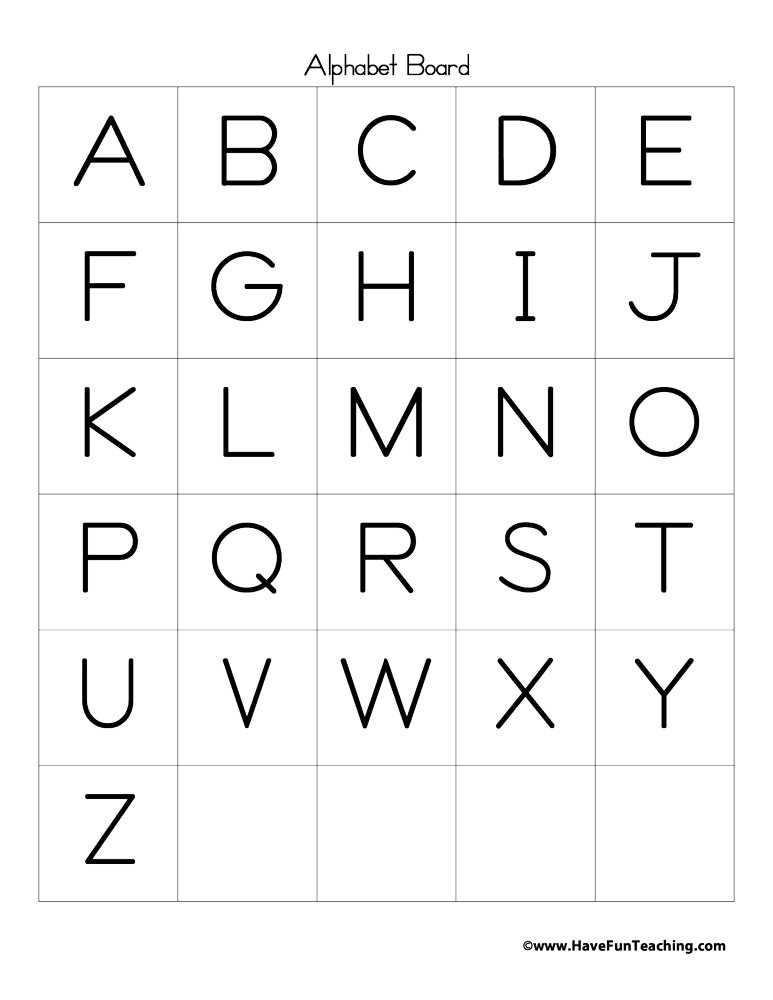
12. Spray or Write Letters Outdoors
Offer spray bottles with water for children to spray letters on driveways, sidewalks, or even the side of your house.
Another option is to use sidewalk chalk to write letters on the driveway, patio, or basketball court.
13. Form Letters with Bendable Materials
Get your child to bend pipe cleaners, chenille stems, or products like Wikki Stix (string covered in wax) to form letters.
Children often like to make multiple letters and form words, as well.
14. Find the Hidden Letters
“Bury” plastic or wooden letters in a sand table or sand box. Ask your child to name the letters as they are discovered.
Other materials may be used as alternates in sand tables or large trays, such as coloured rice, pasta, dried beans, or bird seed.
All of these ideas can help to strengthen your child’s early literacy skills.
Pay attention to where they stand in their development and keep raising the bar just a bit higher, while still returning to those games and activities in which they feel a high measure of success!
This is the key to learning.
Get FREE access to Printable Puzzles, Stories, Activity Packs and more!
Join Empowered Parents + and you’ll receive a downloadable set of printable puzzles, games and short stories, as well as the Learning Through Play Activity Pack which includes an entire year of activities for 3 to 6-year-olds.
Access is free forever.
Signing up for a free Grow account is fast and easy and will allow you to bookmark articles to read later, on this website as well as many websites worldwide that use Grow.
- Share
Build Letter Recognition and Teach the Alphabet in Creative, Hands-On Ways – Proud to be Primary
This post includes fun ways to build letter recognition and practice the alphabet, including letter games, books, crafts, and FREE printable resources to teach letter and phonics skills.
So many resources and ideas for teachers exist to help students learn and practice the alphabet.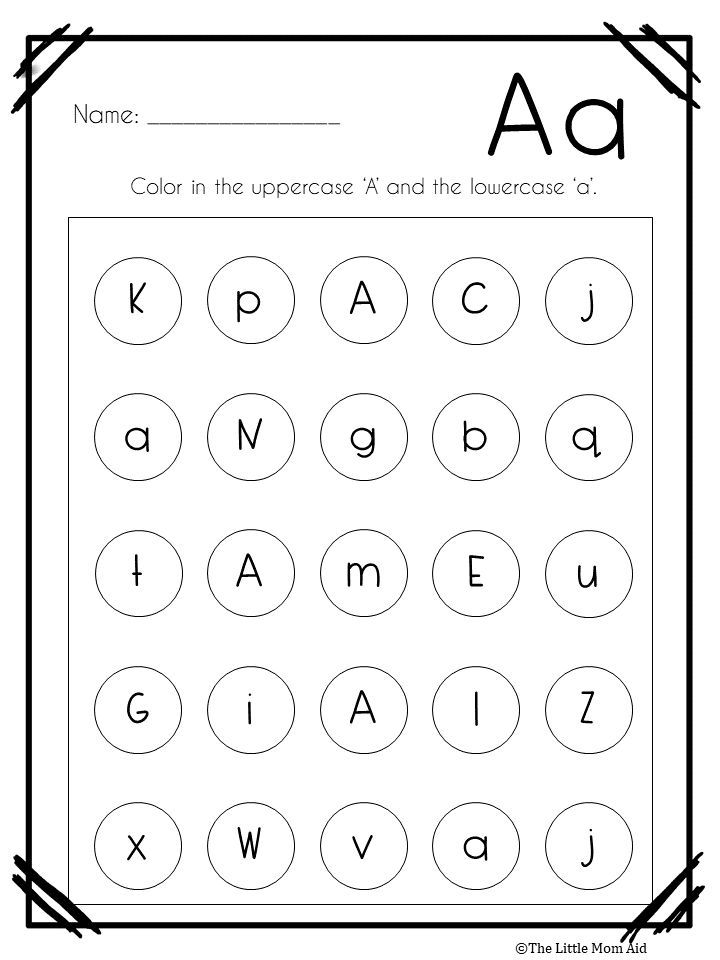 If you’ve been searching endlessly, look no further! You’ll find in this post all the ideas you’ll need to learn letters and their sounds, including activities that build letter recognition and recall. These activities are accessible and easily replicated in the classroom or at home. Read on to get your 19-page free letter ‘A’ activity pack!
If you’ve been searching endlessly, look no further! You’ll find in this post all the ideas you’ll need to learn letters and their sounds, including activities that build letter recognition and recall. These activities are accessible and easily replicated in the classroom or at home. Read on to get your 19-page free letter ‘A’ activity pack!
The following creative ways to learn and practice the alphabet are engaging and practical. Kids will have fun while learning and practicing their letters in a natural and accessible way. These ideas work in the homeschool setting as well.
At the earliest stages of reading instruction, the essential concept to master is alphabet recognition and recall. Children who can quickly recognize and recall the letters of the alphabet have an easier time learning their letter sounds. It is a fundamental concept to master, but one that cannot be overlooked. Letters and their sounds absolutely MUST be memorized to prepare them for reading.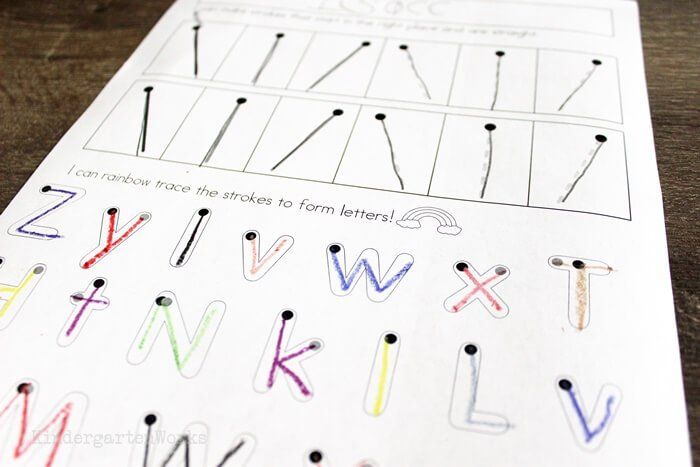 Here’s how to ensure that they are!
Here’s how to ensure that they are!
Resources and Activities: Fun Ways to Teach Letter Recognition
Direct Instruction of Letters and Their Sounds
Direct instruction in early literacy is a necessity. However, how you do this is the key to success.
- Teach letter names before their sounds. Yes, students need to know the names of the letters before being expected to master their sounds.
- It’s okay to practice recognition of letters and their sounds together within a single lesson or learning activity. However, you should also be sure that each of your students knows each of the letters by name. Do this before proceeding further through the stages of reading development. A quick letter recognition assessment is an easy way to find out.
- Practice locating letters in different contexts. Get kids to circle letters they find in your morning messages. Have them find and stamp letters with dot markers.
- Once the letter name mastery is apparent, then you can move on to teaching each letters’ sound in one of the following ways below.
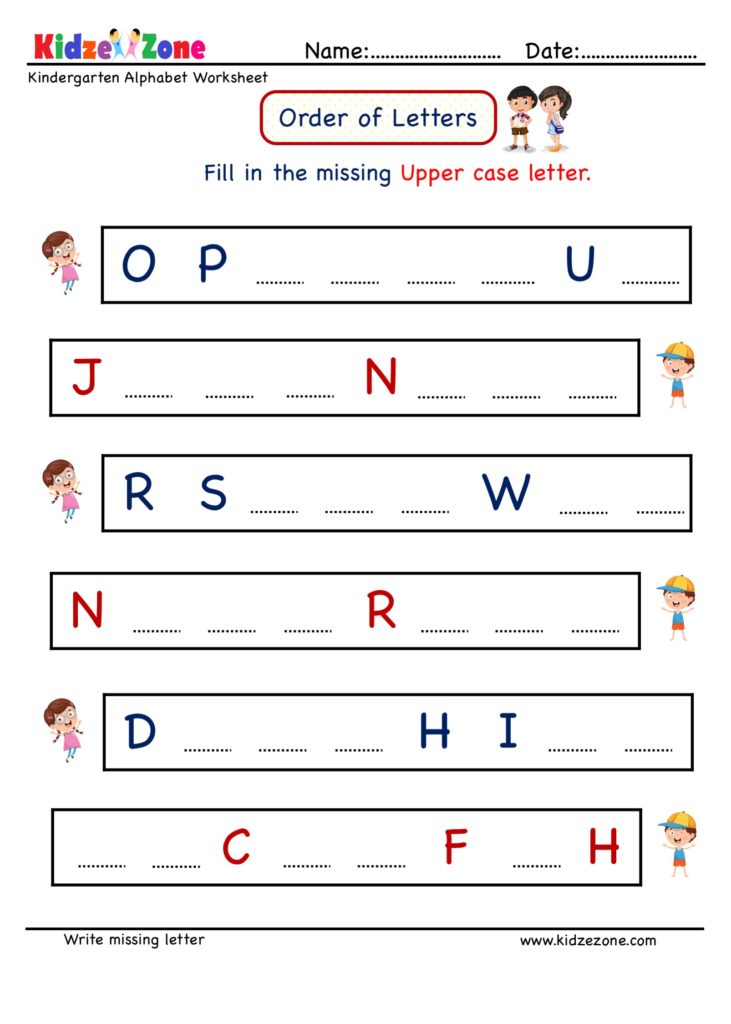 The spot the letter mats are a locating activity and one of our favorite and fun ways to teach letter recognition.
The spot the letter mats are a locating activity and one of our favorite and fun ways to teach letter recognition.
Exposure to the Alphabet Builds Letter Recognition
Students need to be exposed to letters in print excessively. Your classroom needs to provide a literacy-rich environment with letters (and words) everywhere.
- Label everything a child comes into contact with during the day: The classroom door to their desks, their cubbies, and even small things such as their crayon boxes. Items that are labeled will help children recognize and practice their letters all day long. Label items with their name on them as those will be the first letters they will find intrinsic interest in and will most likely learn first.
- Have books in many locations for kids to explore and view. Place shelves of books throughout your room, with the book covers facing outward, by doing so, the colors and titles will invite children to look through them.
 Give them opportunities throughout the day for free reading and exploring text within books. Check out the list of helpful alphabet books further on.
Give them opportunities throughout the day for free reading and exploring text within books. Check out the list of helpful alphabet books further on. - Point out letters daily. Show them simple things such as how the word “Pull” on the door handle to go outside to the playground starts with the letter P. When you open up a book to read, point out the letters in the title on the front, and stop and show them letters within the pages. Help them understand that letters work together to make sounds that turn into words.
- Have a classroom center set-up with alphabet magnet tiles to explore. Encourage kids to order letters, draw pictures and match items that have the same sound, or recognize letters one at a time.
Letter Recognition Requires Practicing the Alphabet
Give your students plenty of opportunities to practice the letters of the alphabet. The ideas and resources for practice in the section below will help you.
- This practice can be done in activities as a whole class, in small groups, or individually.

- Practice should occur at least daily, if not more often. Repetitive practice will reinforce the letter names and their sounds while making the memorization process fast and easy.
- The alphabet absolutely MUST be memorized as this is the most important early step. Practice makes perfect, so provide ample opportunities!
Resources, Printables, and Activities for Letter Recognition
Explicit instruction & Practice
Find times in your routine every day for explicit instruction and practice of letters and their sounds. Here are some basic ideas for classroom activities.
- A “Letter of the Day” is a fun way to practice the alphabet with a whole group. Read a book about things that start with that letter and create an anchor chart with pictures made by students that match words for that particular letter. The letter posters below are helpful tools. Repetitive practice of each letter throughout the year will provide the opportunity for each child within your classroom to master his/her memorization of letter names and sounds.
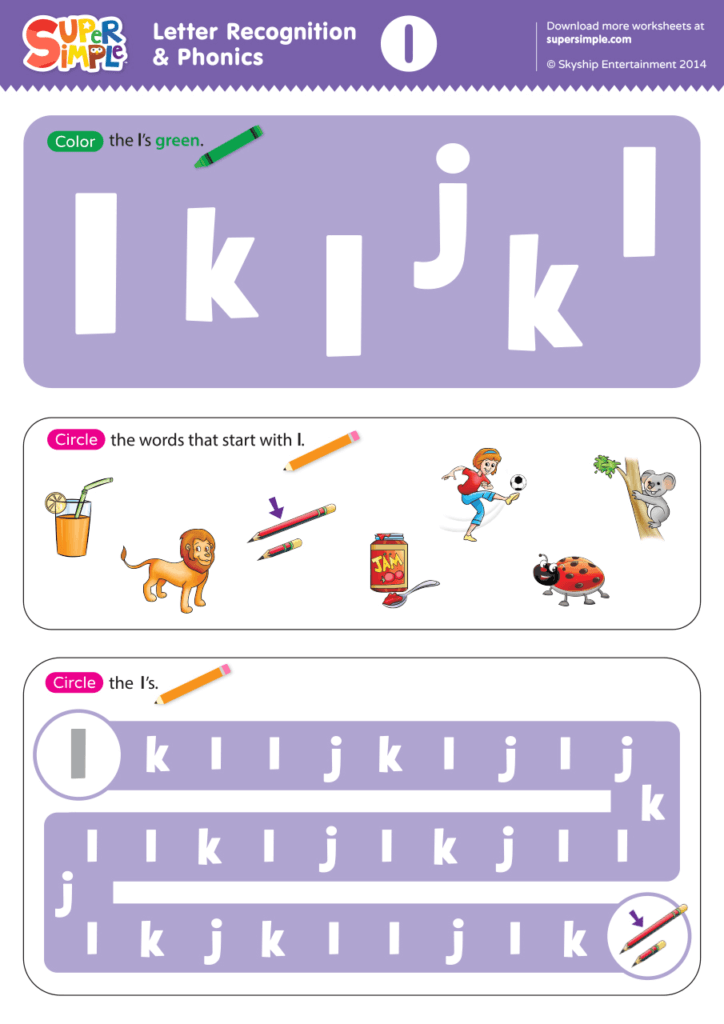
- Being able to write letters well is important. Each day, have children practice the correct handwriting of letters. Before even beginning to write the letters with a pencil, have the children trace large letters with their fingers. Practice the proper formation of letters using do-a-dot markers to form letters by using these alphabet dot pages.
- When beginning tracing exercises in pencil, crayon, or marker, I recommend starting with unlined paper first, then using letter tracing pages, and then freehand on lined paper. Using a Boogie Board is a fun way to practice and have fun.
Alphabet Games Increase Letter Recognition Skills
Kids love games. What better way to practice the alphabet than with these activities?
- Hold up signs of different objects, and ask children what beginning, medial, or ending sound they hear.
- Write the alphabet on the whiteboard, in large letters, and give children a flyswatter.
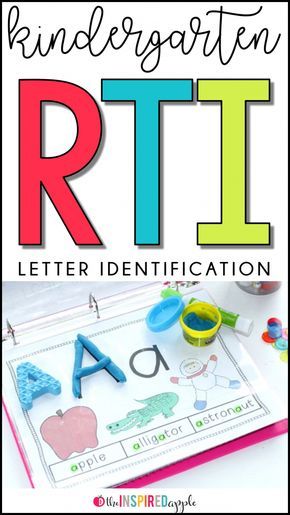 Have them run and smack a letter on the whiteboard when you say it aloud.
Have them run and smack a letter on the whiteboard when you say it aloud. - During guided reading, play a letter recognition game. In small groups, you can quickly assess knowledge and provide practice in a fun way.
- Place a large letter on the end of a popsicle stick and pass one out to each child in the classroom. Ask them to stand when you say a word that starts with their letter or to find a partner with the same letter or to say a word out loud that begins with that letter’s sound, etc.
- Give your children a notecard with their name spelled clearly on it. Say, “Whose name has a __ in it?” and all children with that letter in their name have to do something silly, like stand on one foot or touch their tongue to their nose, etc.
- Do letter scavenger hunts. Kids look for different objects that start with a specific letter. For each item they find, they draw a picture, record a word, or add it to a class chart. The FREE alphabet read & write the room booklet is a great way to keep ideas in one place.
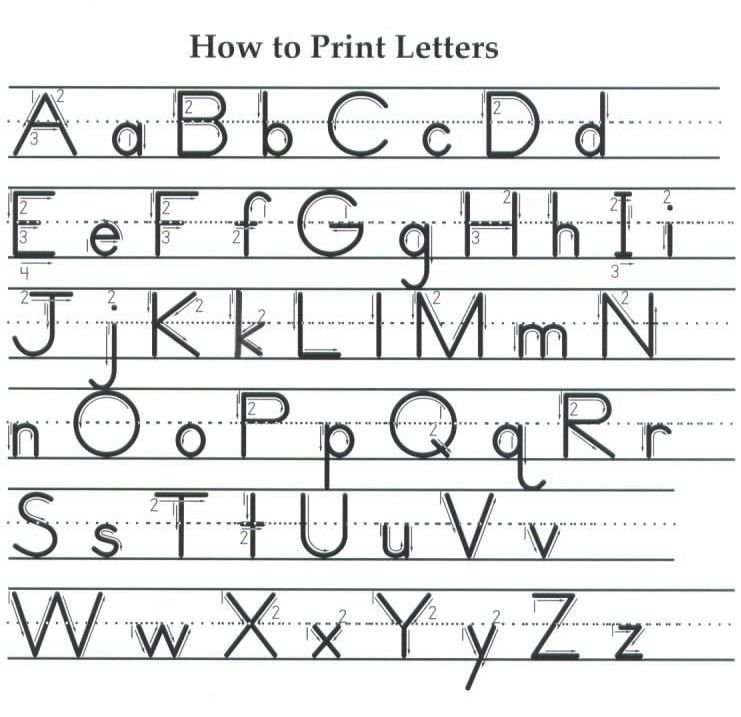 Get your FREE copy HERE!
Get your FREE copy HERE!
Alphabet Books & Songs for Letter Recognition
- Each day during your morning meeting, sing a song that is repetitive and reinforces letters sounds. Add actions and emphasize mouth movement for each sound. The animal alphabet jive is a fun song to make into a book for daily review.
- You can reinforce daily memorization by singing the traditional alphabet song (or any other newer version) daily while pointing to the letters or holding up flashcards.
- Kids can take part in creating their letter books to reread and take home to practice. They color and trace text in these alphabet mini books while they practice their sound to picture knowledge with these guided reading books that are great for small group reading.
Hands-On, Kinesthetic Activities that Build Letter Recognition
For those kinesthetic learners in your classroom, pull out the hands-on activities!
- Anything you can find that provides tactile stimulation is always fun.
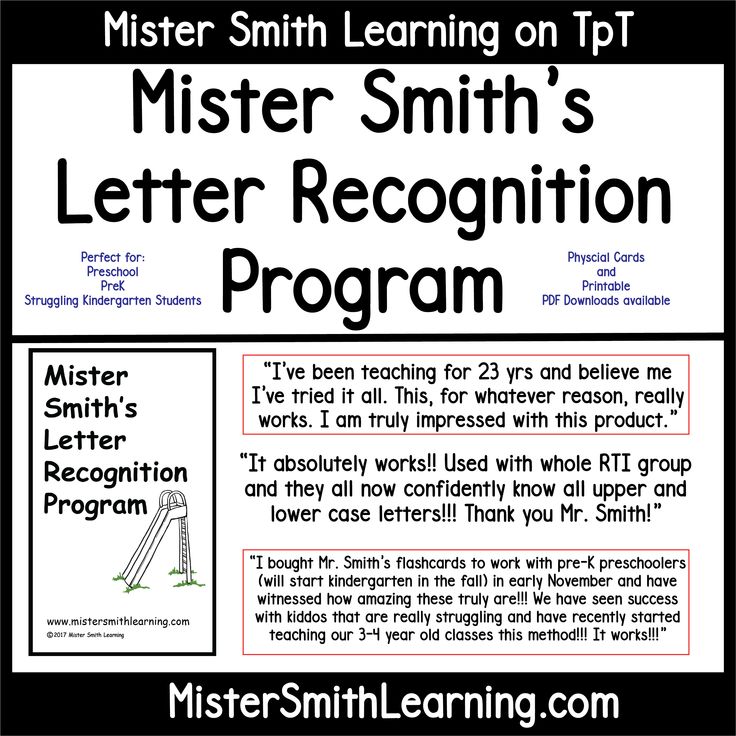 Try using wooden letter blocks that have raised lettering. Cut felt letter shapes for kids to place on a felt board.
Try using wooden letter blocks that have raised lettering. Cut felt letter shapes for kids to place on a felt board.
- Use alphabet cookie cutters and Play-doh, or playdough alphabet mats as a fun activity for the owners of busy little hands to form the letters as they learn.
- If your class is getting wiggly, have them stand up and create “body shape” letters. If you have a camera, take a picture of each child, and display the pictures on your classroom website or create a class alphabet book.
- Cut and paste activities for letter practice are also beneficial for kinesthetic learners. The alphabet strip crafts get little hands cutting and gluing. Kids love creating things they can wear like these alphabet letter ties.
- Looking for more fun ways to teach letter recognition? Try these Fresh and Fun Ways to Teach and Learn Sight Words.
Resources for Teaching the Alphabet
The activities in this post are available in the following resource.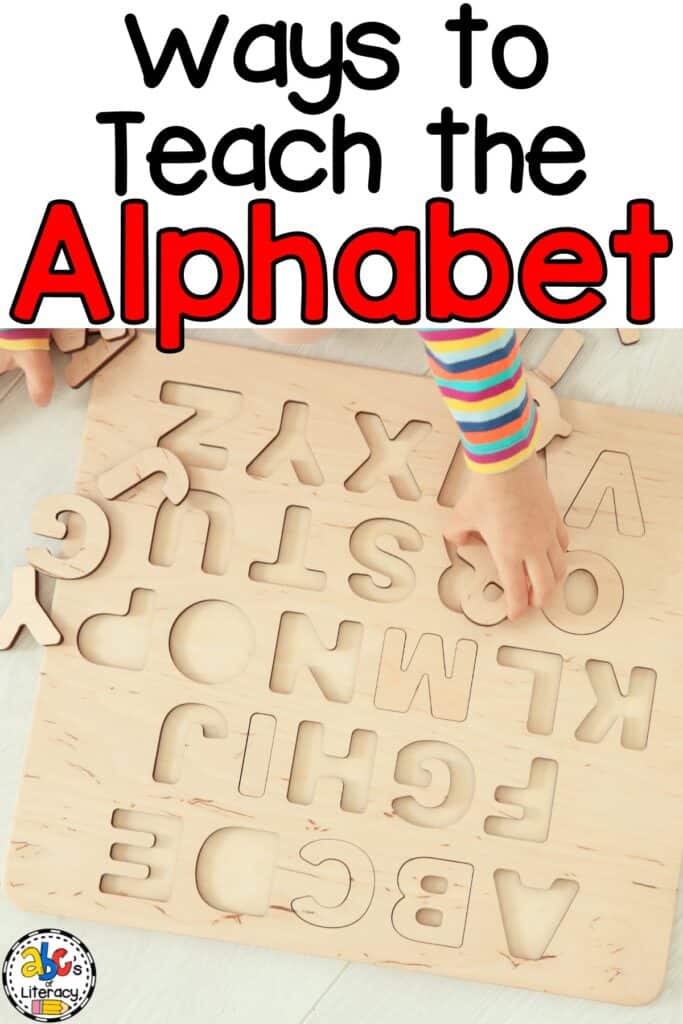
ALPHABET ACTIVITIES MEGA BUNDLE
This Alphabet Activities Bundle includes 17 different alphabet resources in one giant bundle with over 700 pages of alphabet activities. Great for teaching children about identifying and forming the letters of the alphabet, learning what starts with each letter, and building their phonemic awareness. Watch it in action below!
This resource is perfect for Pre-K, preschool, and Kindergarten students learning their letters, but could also be used with first graders needing review with their handwriting and letter sounds or by parents of young children or for homeschooling of young children.
Try the FREE Letter A Activities
Help kids learn the letter A with this sample pack featuring tons of engaging activities they will love!
Grab the 19-page FREE letter A activities pack by clicking the image below.
Alphabet Materials
I hope that these basic ideas for teaching letter recognition and recall are helpful for you as you seek to find hands-on and easy-to-implement resources! Let me know if you have other creative ways to learn and practice the alphabet in your classroom/homeschool in the comments below.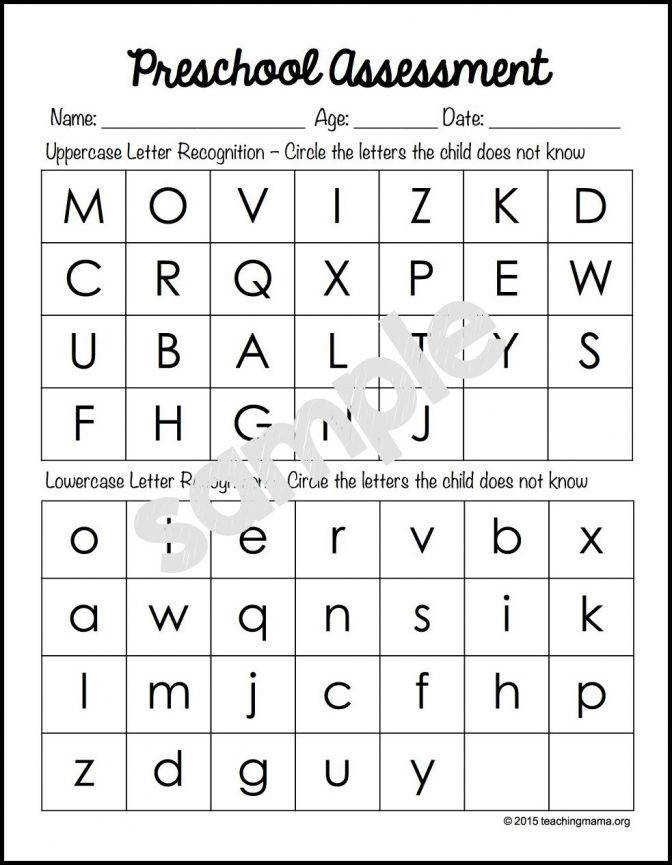
I hope you enjoyed this post! If you would like more tips and ideas from me, be sure to follow me on Teachers Pay Teachers, Instagram, Pinterest, and Facebook to stay connected with the latest news and freebies!
Teaching the Alphabet
Alphabet Books
Alphabet Activities
PIN
FREE Alphabet Email Series
Join the FREE Alphabet Email Course Sign up for the alphabet email series with ideas on exactly what to teach and how, creative strategies, engaging activities, and resources (books, videos, & freebies) to building important early literacy skills. Everything you need to help kids learn the alphabet and have fun at the same time!
First Name
Personal Email Address
We use this field to detect spam bots. If you fill this in, you will be marked as a spammer.
This form collects information I will use to send weekly emails with strategies, promotions, and resources.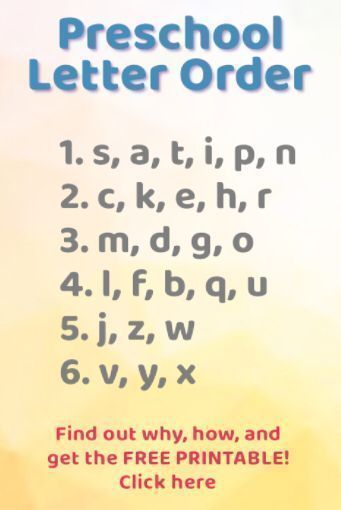 Unsubscribe at any time. Powered by ConvertKit
Unsubscribe at any time. Powered by ConvertKit Learning letters and sounds with children
6795
Before teaching a child to read, parents are advised to first teach the child to recognize and distinguish sounds. Some children understand the difference between letters and sounds after the first explanation, while others do not. And then the mother has to connect her imagination and all her pedagogical abilities in order to first understand herself, and then explain to the child why to distinguish between sounds and letters and how to do it.
It is necessary to understand the following pattern: there are many more sounds than letters, sounds are more important than letters, letters in themselves do not mean anything, and all qualities, for example: sonority, softness, etc., are related to sounds. One letter can represent several sounds. Therefore, we begin to learn to speak and read precisely with sounds.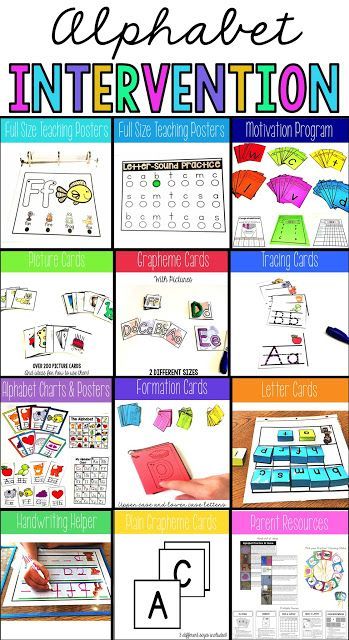
Tell a kid a story:
“People lived in ancient times. They already knew how to speak and therefore loved to tell each other fairy tales and sing songs. But everything they told was quickly forgotten, because people did not know how to write. Fairy tales and songs were so interesting that a person wanted to remember them for a long time. And then people came up with special letter icons. The letters denoted the sounds that people uttered when telling a fairy tale. So the ancient man began to write down his fairy tales with the help of letters. Therefore, letters-icons now live in books, but they are always silent until you want to read them aloud. And as soon as you want to read a letter, sound will immediately appear. Sound and letter are the closest friends and cannot live without each other. A letter without a sound is silent, and a sound without a letter immediately disappears.
There will be 33 houses in the city, because there are 33 letters in the alphabet. A river will flow through the city, which will divide it into three parts. One coast is called "Vowers", the second - "Consonants", and empty houses are built on the third coast. However, houses will be built in the city not only on the shore, but also on the river. Floating houses are special. They can be painted in two colors, and empty houses in one gray color.
A river will flow through the city, which will divide it into three parts. One coast is called "Vowers", the second - "Consonants", and empty houses are built on the third coast. However, houses will be built in the city not only on the shore, but also on the river. Floating houses are special. They can be painted in two colors, and empty houses in one gray color.
Houses in the city are divided into three types: with two tenants, with one and empty houses.
On the bank of vowels there will be 6 single houses: a, i, o, u, s, e.
Houses were built on the bank of consonants, where 2 sounds live at once - hard and soft: b-b, v-v, g-g, d-d, z-z, k-k, l-l, m-m, n -n, p-p, r-r, s-s, t-t, f-f, x-x, and single houses: f, c, w, d, h, u. In total, 21 houses were built on the bank of the consonants.
Suitcase houses will live on the river, there are only 4 of them. Two sounds Y-E live in the house E, sounds Y-O live in the house YO, in the house Yu - Y-U, in the house I - Y-A. These houses were built on the river because vowels and consonants coexist in them.
These houses were built on the river because vowels and consonants coexist in them.
There are empty houses on the third bank: b sign and b sign. Nobody lives in these houses. Therefore, these letters do not have sounds. They are only for writing.
Play with the drawn map.
Discuss with your child in the following sequence: the letter B is the house of two friends: a large and hard sound B and a small and soft sound b. Compare how the letter B sounds, for example, in the words Bom and Bim. (In the word Bom we hear a hard sound B, in the word Bim - a soft sound b).
When examining a book, ask: “Where is the letter M in the word BEAR? And what sounds live in the house-letter M?" The child must remember the map or directly examine it with you at this moment and show with a finger that sounds live in this house: big and hard M and small and soft m.
When studying consonants, call them by the sound they denote, i.e. not "me" or "em", but "m". Otherwise, later it will be very difficult for the child to learn how to combine letters into syllables and words.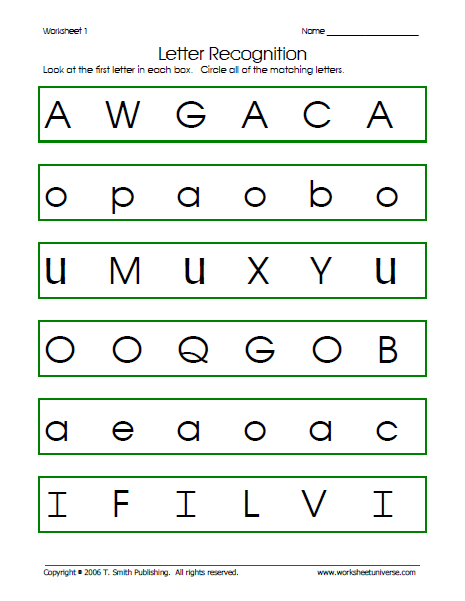
The ratio of sounds and letters is a rather abstract thing for kids. And it will be easier for them to understand it if they are guided by the picture and create images in their imagination.
The Razumeikin website will help your child learn letters in the "Letters and Reading" section and get acquainted with the characteristics of sounds in the "Preparing for Literacy" section - educational videos and interactive tasks will turn learning to read into an exciting game!
Did you like it? Share with friends:
Online classes on the Razumeikin website:
-
develop attention, memory, thinking, speech - namely, this is the basis for successful schooling;
-
help to learn letters and numbers, learn to read, count, solve examples and problems, get acquainted with the basics of the world around;
-
provide quality preparation of the child for school;
-
allow primary school students to master and consolidate the most important and complex topics of the school curriculum;
-
broaden the horizons of children and in an accessible form introduce them to the basics of various sciences (biology, geography, physics, chemistry).
5 Ways to Learn the Alphabet Quickly and Easily with a 3-6 Year Old Child – Somersault
Before learning the alphabet with a child, it is important to understand what you are not going to do. Namely, learning to read. This is a more complex skill, so it is worth putting it off until the time when the child gets acquainted with all the letters and will confidently recognize them and write on their own. Until then, put off the alphabet and reading by syllables.
In this article, we have put together the basic principles to quickly learn the Russian alphabet with a 3-6 year old child in a playful way. For all games with letters, you can use plasticine, paints and any improvised means or magnetic letters TWIST - they will easily attract the attention of the child.
Contents:
- Learning the Alphabet Easily: Basic Principles
- 5 ways to learn the alphabet with your child
- From alphabet to reading
Learning the Alphabet Easily: Basic Principles
Each child can find an easy way to learn the alphabet that suits them best, but there are basic principles that are important for all children. If you do not follow them, study will turn into drill and the child is unlikely to ever love to read. Here are a few such principles on how to properly learn the alphabet for a child.
If you do not follow them, study will turn into drill and the child is unlikely to ever love to read. Here are a few such principles on how to properly learn the alphabet for a child.
- Learn sounds first, not letters . At the first stage of learning, it does not matter how the letters in the alphabet are called correctly. Now only sounds are important for the child - "d", and not the letter "De". The names of the letters will only confuse the child, who first needs to learn to recognize the shape of the letters and their sound.
- Not learning the alphabet in the correct sequence . Until a child goes to school, it is of no use to him to know how the letters are arranged in the alphabet. This information will only distract him from what is really important: how the letters look and sound. The sequence of the alphabet can be learned later or even at school, where this knowledge will be tested by the teacher.
- Do not turn learning into a lesson .
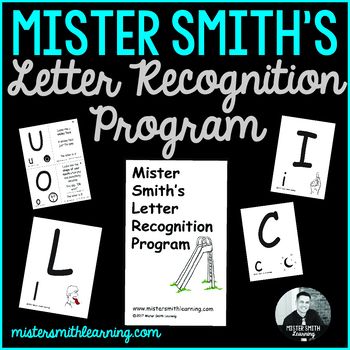 Learning from call to call is difficult even for children at school, let alone a baby. Therefore, all learning should take place in a playful way and not for long: 5-7 minutes a day to get acquainted with the letters will be enough. Gradually, this time can be increased, especially if the child likes the proposed games with letters.
Learning from call to call is difficult even for children at school, let alone a baby. Therefore, all learning should take place in a playful way and not for long: 5-7 minutes a day to get acquainted with the letters will be enough. Gradually, this time can be increased, especially if the child likes the proposed games with letters. - Use material objects . At the age of 3-6 years, the child learns the world by touch and taste. It is difficult for him to work with abstract letters spoken aloud. Therefore, it is better to stock up on plasticine and paints and create letters that are more understandable to the child and can be touched. Such a game for children will allow the child to learn the letters of the alphabet and he will recognize them in different forms regardless of what they are made of.
- First vowels, then consonants . Vowel sounds are easier to pronounce, so it's worth starting with them.
The main thing is not to force anyone.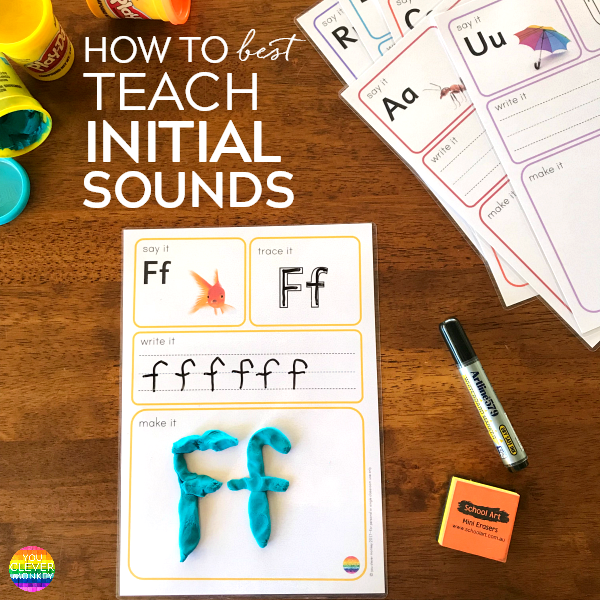 If you see that the child is inquisitive, enjoys exploring the world and is ready to learn, you can move on to learning letters and the alphabet. So the child will be happy to learn the alphabet in a playful way and gradually learn to read. So that the game is not abstract, you can use the magnetic letters TUMBLING.
If you see that the child is inquisitive, enjoys exploring the world and is ready to learn, you can move on to learning letters and the alphabet. So the child will be happy to learn the alphabet in a playful way and gradually learn to read. So that the game is not abstract, you can use the magnetic letters TUMBLING.
5 ways to learn the alphabet with your child
1. Use an interesting topic to study
Use your child's interest to spur his motivation to learn. For example, if your kid is crazy about cars, let them be the topic in which you learn the alphabet. Use any words related to cars:
"A" - bus
"B" - trunk
"C" - driver, etc.
You can show cars and their parts, draw or sculpt from plasticine. It is important that the child's focus shifts from learning to doing what they love. Additionally, the method will help expand vocabulary and knowledge about the world.
2. Cross out a letter of the alphabet in the list
Fill in a small square with arbitrary letters. The task is to cross out only the letter that you are studying. This will help the child focus on one letter and not get distracted by the ones he doesn't remember or don't know.
3. Take out the letters of the alphabet from the pouch
The soft-touch magnetic letters are perfect for this method. Put the letters in a bag and give the child the task, without looking, to pull out only the letter that you thought of. Let there not be too many letters in the bag, otherwise the child will get confused. 6-7 pieces will be enough. To start, use letters that are very different in shape, such as "O" and "M". Gradually, the complexity can be increased and searched among similar letters, for example, "K" and "X". Don't forget to praise and encourage your child. You can alternate the learning process with desktops.
4. Recognize letters of the alphabet by ear
You pronounce a word, and if it contains a hidden letter, the child claps his hands.
With this game for kids, you can learn individual letters or the entire alphabet.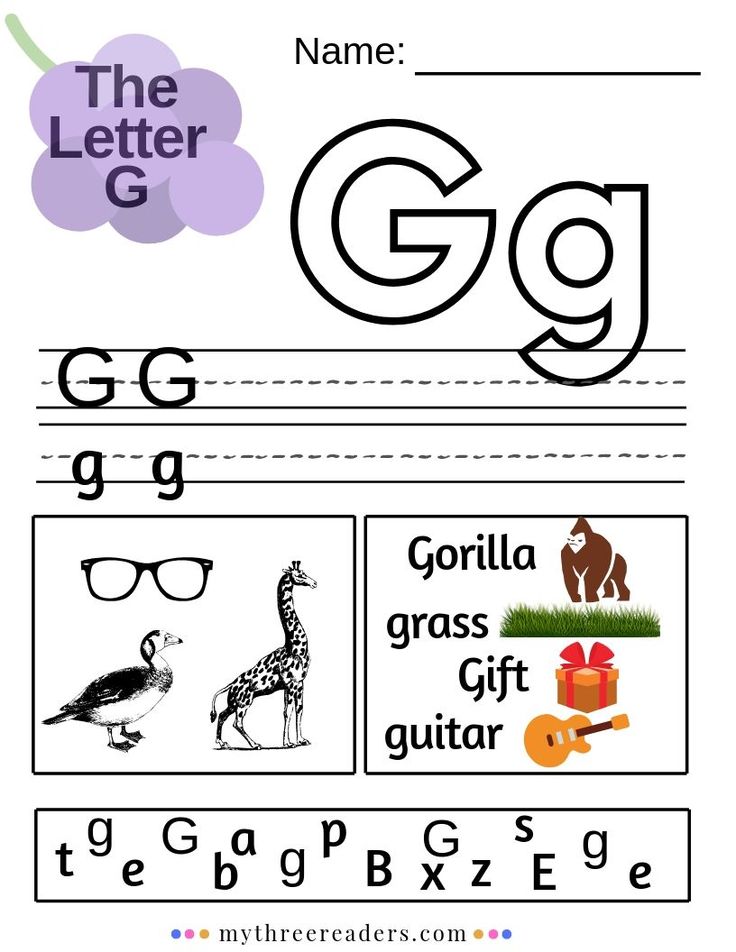 For example, you name a word, and the child inserts its first letter into the insert frame. To stimulate your child's interest, you can use only words from his favorite topic, for example, the names of animals.
For example, you name a word, and the child inserts its first letter into the insert frame. To stimulate your child's interest, you can use only words from his favorite topic, for example, the names of animals.
5. Guess words starting with the first letter
You choose one letter and think of a word that starts with that letter. For example, the letter "Z":
- What is this animal with big ears and loves carrots?
- Hare!
This game form is again suitable for learning individual letters or the entire alphabet. If you learn only one letter, the child gets used to quickly recognizing it in different words. And if you give words with different letters, the child as a whole learns to understand with which letter they begin. With the study of the account and the English language will also help TUMBLING.
From the alphabet to reading
When a child learns the Russian alphabet, confidently recognizes all the letters in different words and can draw or mold them on his own, it is worth moving on to reading.